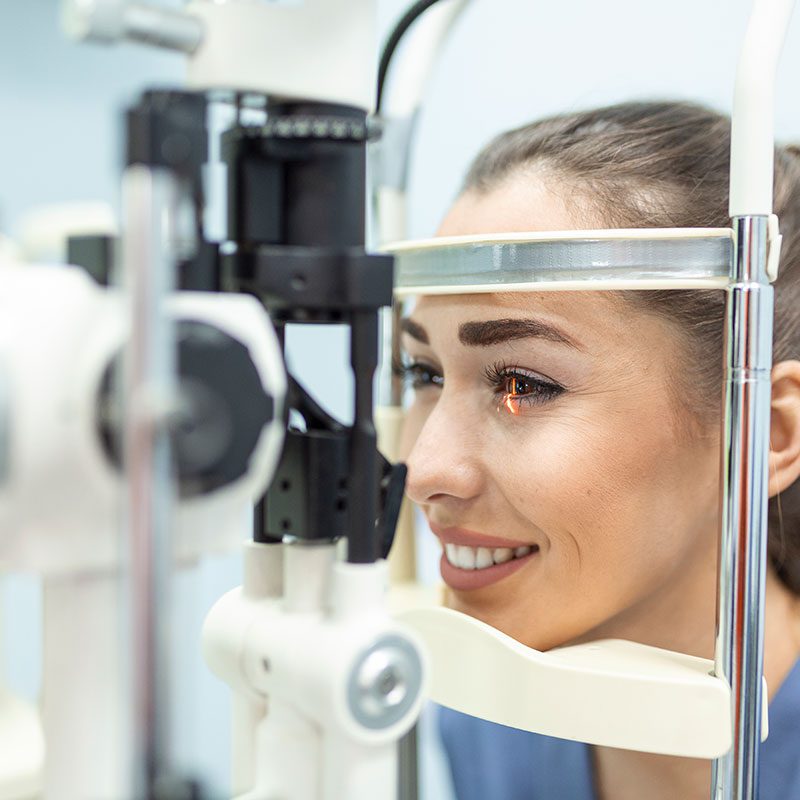OPHTHALMOLOGY

In our OPHTHALMOLOGY equipped with advanced technologies;
In our eye clinic equipped with advanced technologies;
Computerized eye examination,
Computerized eye examination for children,
Eye pressure examination and treatment,
Strabismus examination and treatment,
Diabetic Retinopathy (diabetes examination and treatment),
Eye fundus examination,
Computerized visual field testing
Eye Ultrasonography,
Angiography (FFA),
Cataract (phaco) surgery,
Strabismus (strabismus) Surgeries,
Lacrimal obstruction surgery (DCR),
ARGON laser treatment,
YAG laser treatment
can be done.
Eye Pressure (Glaucoma), one of the most important eye diseases causing blindness, affects 1.5 million people in Turkey. With early diagnosis and treatment, blindness caused by eye pressure can be prevented.
Glaucoma, popularly known as eye pressure, is a disease that occurs when the fluid pressure inside the eye increases to a level that damages the optic nerve and negatively affects vision. If left untreated, glaucoma can lead to total vision loss in both eyes.
Approximately one in every 40 people over the age of 40 has eye pressure. Additionally, the disease causes vision loss in both eyes in one in every 20 people affected.
At first, the disease does not cause any symptoms. Pain and vision loss are not observed. Ocular hypertension disease progresses insidiously. In some patients, some symptoms such as headache, inability to see some areas in the environment, and seeing colored light halos in front of the eyes may be noticed at an early stage. However, the presence of the disease cannot be recognized until it causes significant vision loss (approximately 40%) in most patients. If the disease is left untreated, it progresses and gradually leads to narrowing of the visual field. The visual field gradually narrows and eventually vision is completely lost.
This disease can be seen in anyone and at any age, especially;
Those over the age of 40,
Those with a family history of glaucoma,
smokers,
Those who use cortisone for a long time,
Those with eye injuries,
Those with high blood pressure,
Those with diabetes,
Those with vascular disease,
People with high blood pressure and
Those with high myopia also have a higher risk of being seen.
Eye pressure
Early Diagnosis is Important in Eye Pressure
Glaucoma disease progresses without any symptoms and causes vision loss over time. The earlier the disease is diagnosed and treatment is started, the lower the risk of vision loss. For early diagnosis, every individual, especially over the age of 40, should have an eye examination and have their eye pressure measured at least once a year.
Signs of eye pressure are detected during the routine eye examination of the patient. However, the following methods are used to definitively diagnose glaucoma:
Measurement of Intraocular Pressure (Eye Pressure):
Evaluation of Optic Nerve Damage: It is a method of evaluating the optic nerve directly from the pupil with an instrument called ophthalmoscope.
Computerized Visual Field: It is a method used to determine the amount of optic nerve damage and loss in the visual field.
Evaluation of the Drainage Angle of the Eye: It is the diagnostic method used to evaluate the structural causes that cause eye pressure and to determine the treatment to be chosen.
The treatment for glaucoma is not intended to cure the disease. The main goal of treatment is to control eye pressure and stop the progression of optic nerve damage and vision loss. It is not possible to replace dead cells with treatment. Various methods are used in the treatment of eye pressure:
Medication Treatment: After the diagnosis of eye pressure is made, the patient is first given medication. In cases where drug treatment in the form of drops is not sufficient, eye pressure can be controlled by laser method or surgical intervention.
Laser Surgery: It is the method used to reduce blood pressure by ensuring fluid flow within the eye in types of glaucoma with stenosis or closure in terms of drainage.
Surgical Interventions: These are attempts to surgically reduce the pressure inside the eye in patients for whom drug treatment with drops is insufficient or who will not benefit from laser application.